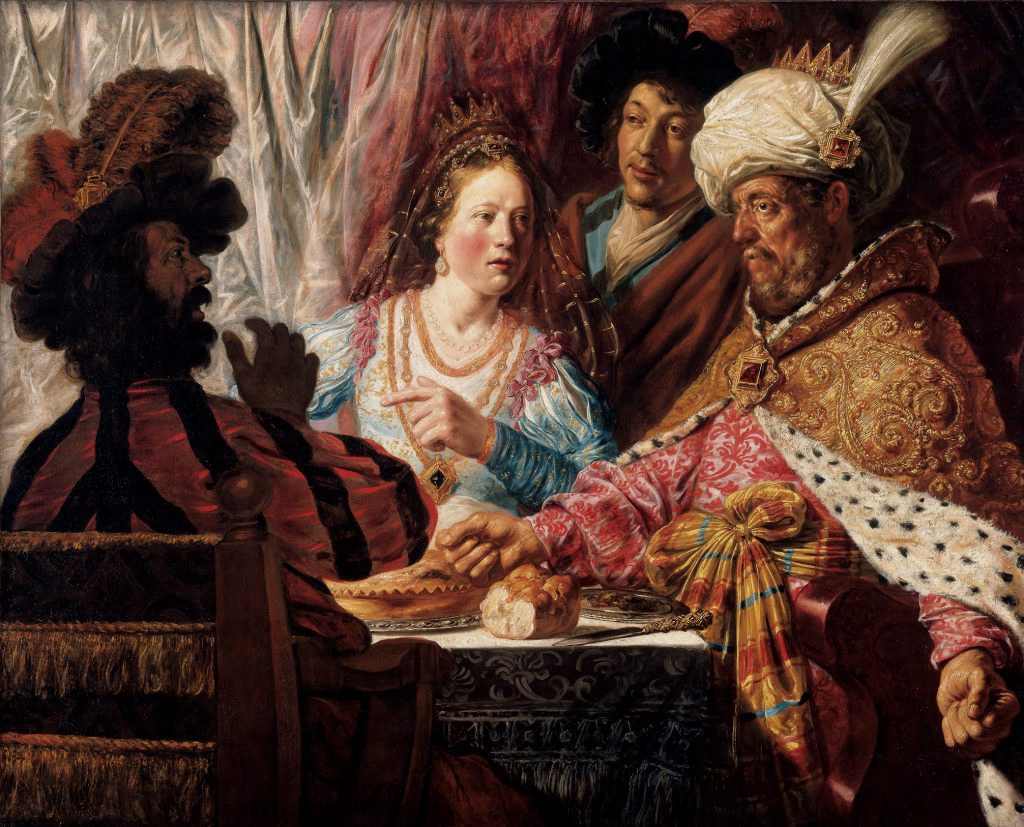La fiesta de Ester (obra de arte)
Información sobre la obra de arte
Key Ideas
- This painting depicts a scene from the Book of Esther in the Hebrew Bible (and the Old Testament).
- In the 17th century, Esther was considered both a Jewish heroine and an important symbol in the Netherlands. She was a young Jewish woman who risked her life to save the Jewish people from destruction. The Jewish holiday of Purim is a celebration of Esther’s courage.
- Art historians once believed that this painting was created by Rembrandt, but now it is attributed to Jan Lievens. Both Rembrandt and Lievens were Dutch Golden Age painters.
Más información
This oil painting features delicate brushstrokes, bold colors, and strong contrast. It depicts a scene from the Book of Esther in the Hebrew Bible and the Old Testament. In this scene Queen Esther, who was Jewish, tells the king that his advisor is plotting to execute all Jews in Persia. By speaking up she helped to save her people from persecution.
In the 17th century, Esther was both a Jewish heroine and a symbol of the Dutch struggle against persecution from Catholic Spain. It was during this time that the Dutch revolted against Spain. The Dutch were being attacked for having different religious beliefs. This painting, which was created during that time of struggle, honors the bravery and resilience of both Esther and the Netherlands. Each year the Jewish holiday of Purim celebrates Esther’s heroic role in saving the Jewish people.
The Feast of Esther is attributed to Dutch painter Jan Lievens. He painted in the Netherlands around the same time as Rembrandt and was influenced by his style. This painting was created during a period when Lievens and Rembrandt may have shared an art studio.
Recursos adicionales
Recursos para los profesores
- Read an article about the conflict between the Netherlands and Spanish Flanders.
- Read an article about the Book of Esther.
- Read an article about the life of Jan Lievens.
Recursos para los estudiantes
- Watch a video about the Dutch conflict with the Spanish.
- View another Dutch painting that features the same subject matter.
- Read an article about the holiday of Purim.

